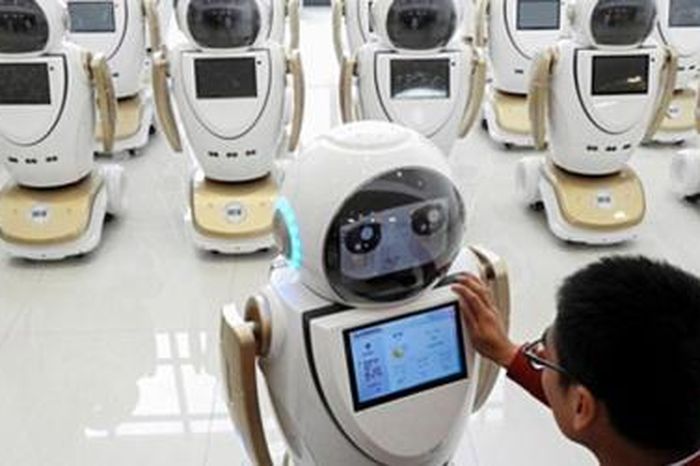New invention: China launches outstanding energy-saving chip
It is known that the research team has significantly reduced the power consumption of these chips through optimizing the algorithm and structure. Then, the team presented their product at the IEEE 2024 International Solid State Circuits Conference (ISSCC) taking place in San Francisco, USA.

The first AI chip designed to be integrated into smart devices, to support offline voice control. The main advantage of this new AI chip is its ability to overcome the barriers of standard speech recognition systems, the research team said. Unlike other systems, this microchip is capable of accurately recognizing speech even in noisy environments with distractions such as TV, music or chatter.
The chip achieves recognition power consumption of less than two microjoules per use, with an accuracy rate of more than 95% in quiet spaces and 90% in noisy environments' This is considered a new benchmark in both power efficiency and accuracy in AI chip technology.
In a demonstration, a microchip measuring 1 cm2 was integrated into the microcontroller inside a toy car to control its movements. In addition, this microchip can also be used in low-power, voice-controlled cases such as in furniture applications, wearables and smart toys.
The team's second AI chip is designed to detect seizure signals in people with epilepsy. This technology is integrated into wearable devices, using electroencephalogram (EEG) identification to detect seizures and notify patients to immediately go to a medical facility for treatment. With an average recognition power consumption of only 0.07 microjoules, this is the most energy-efficient AI chip in the world to date.
In a presentation at ISSCC, the South China Morning Post (SCMP) reported that information about the user's brain activity is collected and transmitted for analysis or testing via Bluetooth technology. In addition, the AI chip is reprogrammed to recognize imagined motor commands from EEG signals, helping users imagine the actions they want to perform. Thanks to that, the chip will detect and interpret the corresponding signals to control the movement of a robot.
The team concluded that the chip is not only capable of detecting seizures, but can also be widely applied in a variety of medical and technological applications, such as brain-machine interfaces and sleep monitoring .
With the introduction of these two chips, China is continuing to play a pioneering role in the field of AI technology and contribute to the advancement of global industry.
You should read it
- Away from Windows Phone, HTC 'go night' with China OS?
- Apple's new Mac Pro will be assembled in China, not in the US like before
- What Are the Top 10 Firewall Software in China?
- 13 odd things can only happen in China
- Cuong Cuong - China's most famous electronic market is now 'dyed pink' by cosmetics
- China Mobile plans to deploy 5 5G cities in China
- After Facebook, Youtube and Twich, Bing will also 'run out of business' in China
- China has at least 10 PoP presence points to hijack the network architecture
- Robots that distribute vegetables, tubers, fruits and patrol show China's increasing automation
- Top 10 largest social networks in China today
- Found ancient tombs containing more than 200 steles in southwest China
- China builds rockets that deliver goods to anywhere on Earth within 1 hour
May be interested

Big Tech corporations prioritize investing in AI startups

100 billion USD to build the most expensive supercomputer facility in the world

Rushing to invest in generative AI because of FOMO?

The generative AI craze is driving Big Tech to invest billions of dollars in startups

Production - business changes due to robots and virtual people

Use AI and the largest telescope to find aliens and interstellar life






 Meaning of energy ranking labels saves electricity on appliances
Meaning of energy ranking labels saves electricity on appliances Samsung announced a 3nm process chip, saving more than 50% energy, 35% faster than 7nm chip
Samsung announced a 3nm process chip, saving more than 50% energy, 35% faster than 7nm chip Top 15 Most Energy-Saving Air Conditioners Worth Buying Today
Top 15 Most Energy-Saving Air Conditioners Worth Buying Today The Bluetooth chip works without batteries, taking energy from the waves in the surrounding environment
The Bluetooth chip works without batteries, taking energy from the waves in the surrounding environment Internet Explorer 10 is the most battery-saving browser
Internet Explorer 10 is the most battery-saving browser The world's 4th largest chip maker is banned in China, the global technology supply chain is in danger of major disturbance
The world's 4th largest chip maker is banned in China, the global technology supply chain is in danger of major disturbance